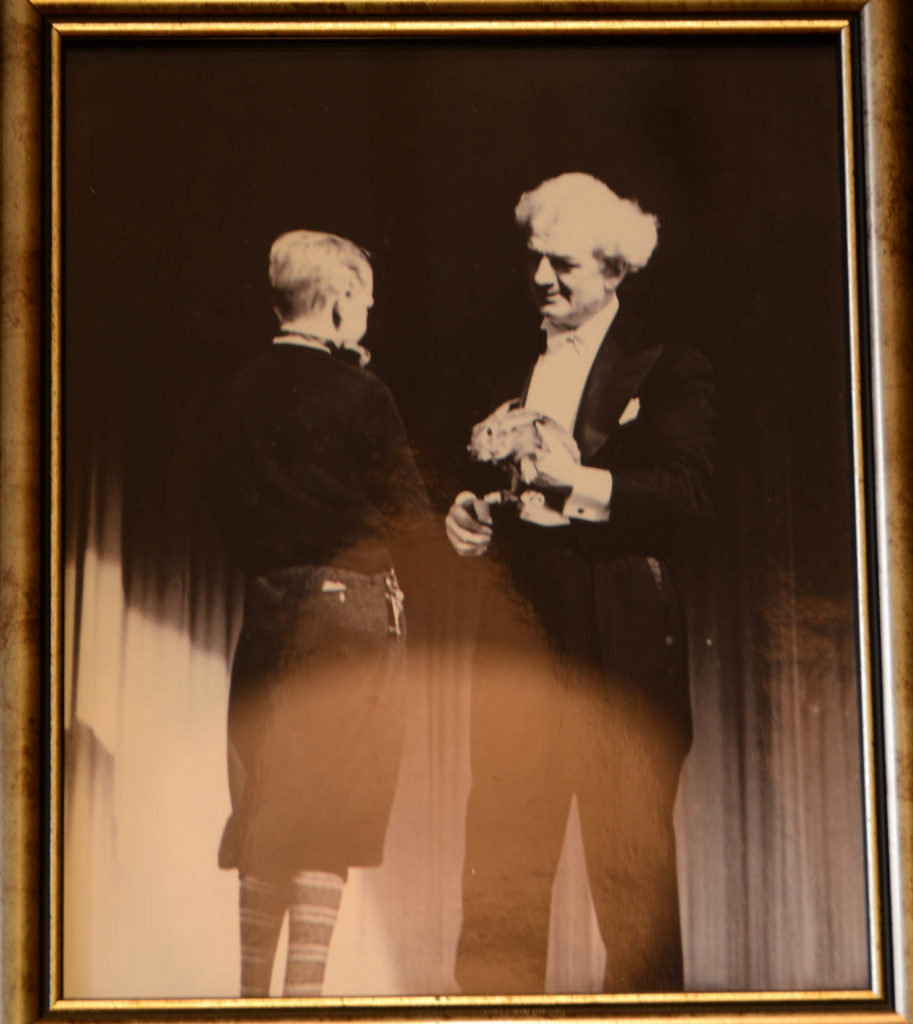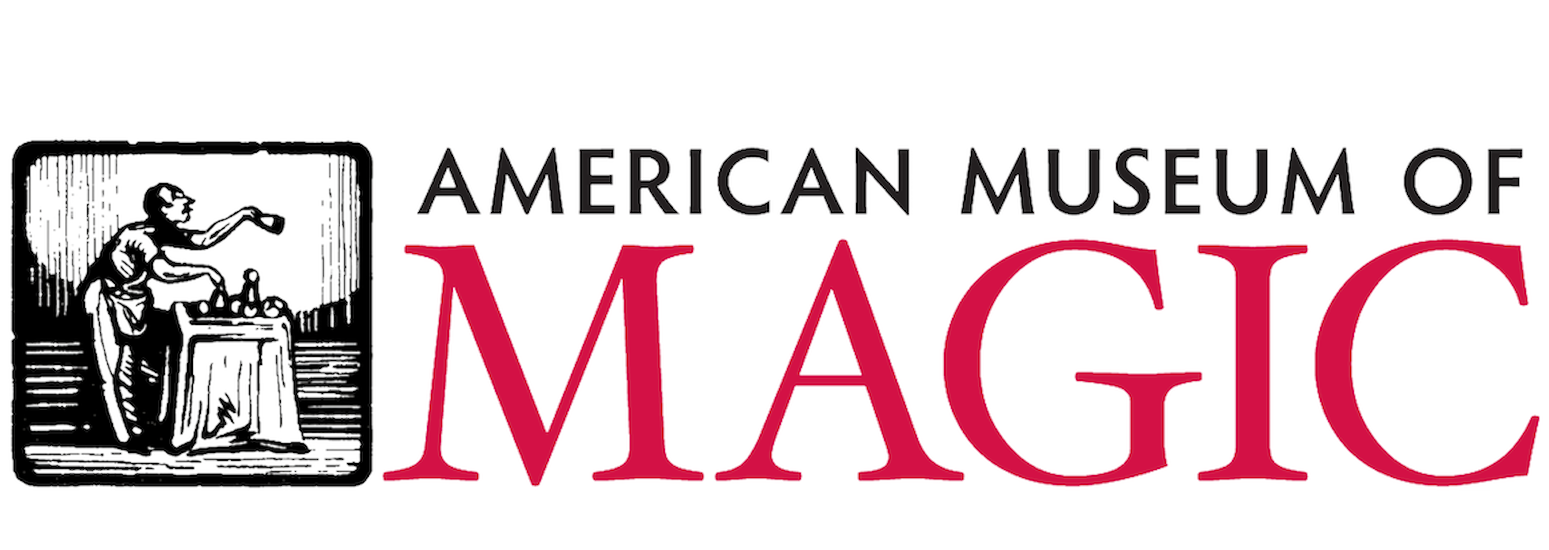The History of Magic
Magic, sometimes referred to as illusion, is a performing art in which audiences are entertained by staged tricks or illusions of seemingly impossible feats using natural means. At the American Museum of Magic, we help to educate individuals young and old about the history of magic and the people who have performed it.

How far back can we go?
 An Egyptian papyrus dated around 2500 BCE portrays a magician named Dedi performing an animal decapitation trick for the pharaoh. According to the story, Dedi magically replaces the severed heads and then makes a number of prophecies to the king. Some experts believe that the tale is purely fictional, while others point out that there are a number of Egyptian stories that describe magicians who also make prophecies.
An Egyptian papyrus dated around 2500 BCE portrays a magician named Dedi performing an animal decapitation trick for the pharaoh. According to the story, Dedi magically replaces the severed heads and then makes a number of prophecies to the king. Some experts believe that the tale is purely fictional, while others point out that there are a number of Egyptian stories that describe magicians who also make prophecies.
In a painting from the tomb wall of Baqet III dating from the 21st century BCE, two men are sitting around a table with inverted bowls. Some people interpret this as the first “Cup and Balls” routine, while others point out that it may be some other type of game. The painting also depicts jugglers and other games and leisure activities.
It isn’t until around 50 CE, however, that magic as a performance art is reliably documented. A group of magicians called the Acetabularii performed the Cup and Balls routine in ancient Rome for roughly 250 years. Around 65 CE, the historian Seneca the Younger of Rome comments about taking pleasure in the mystery of the cup and dice trick:
“Such quibbles are just as harmlessly deceptive as the juggler’s cup and dice, in which it is the very trickery that pleases me. But show me how the trick is done, and I have lost my interest therein.”
From about 400 to 1500 CE, little is known about the history of magic, but much of it is associated with the occult. Magic as entertainment is not prominent. In 1584, Reginald Scot published The Discoverie of Witchcraft, a book designed to persuade others that people shouldn’t be burned at the stake or hanged for performing simple magic tricks. Many of those tricks of conjuring were revealed in the book. It is considered the first published material on performance magic. In 1603, at the accession of James I, Scot’s book was ordered to be burned, making first editions moderately rare.
Until the 18th century, magic shows were a common source of entertainment at fairs, where itinerant performers would entertain the public with magic tricks. As belief in witchcraft was waning, the art became increasingly respectable and shows would be put on for rich private patrons. A notable figure in this transition was Isaac Fawkes, an English showman, who began to promote his act in advertisements from the 1720s. He claimed to have performed for King George II. Upon Fawkes’ death in 1732, he reportedly had amassed a fortune exceeding ten thousand pounds, equivalent to at least a million dollars today.
The Birth of Modern Magic
A founding figure of modern entertainment magic was Jean Eugène Robert-Houdin, originally a clockmaker, who opened a magic theatre in Paris in 1845. Known today as “The Father of Modern Magic,” Robert-Houdin transformed magic from something performed at fairs to a performance that the public paid to see at the theatre.
John Henry Anderson was pioneering the same transition in London. In 1840, he opened the New Strand Theatre, where he performed as The Great Wizard of the North. He became one of the earliest magicians to attain a high level of world renown.
Towards the end of the century, large magic shows permanently staged at big theatre venues became common. The British performer John Nevil Maskelyne and his partner Cooke were established at the Egyptian Hall in London’s Piccadilly in and continued there for 31 years.
Alexander Herrmann (1844 –1896), also known as Herrmann the Great, became the idealized model for how a magician would be perceived: a man with thick wavy hair, a top hat, a goatee, and a tailcoat. Herrmann was a French magician and part of the Herrmann family name that was often deemed the “first family of magic.”
The escapologist and magician Harry Houdini took his stage name from Robert-Houdin and developed a range of stage magic tricks, many of them based on what became known after his death as escapology. Houdini is still, to this day, the best-known name not only in magic, but perhaps in all of show business. In the late 19th and early 20th centuries, magicians such as Maskelyne and Devant, Howard Thurston, Harry Kellar, and Harry Houdini achieved widespread commercial success during what has become known as “The Golden Age of Magic.”
Performance magic became a staple of Broadway theatre, vaudeville, and music halls. Magic easily moved from theatrical venues to television specials, which brought stage magic to huge audiences. Most television magicians perform before a live audience, who provide the remote viewer with a reassurance that the illusions are not obtained with visual effects.
Famous magicians of the 20th century included Okito, David Devant, Harry Blackstone Sr., Harry Blackstone Jr., Howard Thurston, Theodore Annemann, Cardini, Joseph Dunninger, Dai Vernon, Fred Culpitt, Tommy Wonder, Siegfried & Roy, and Doug Henning. Popular 20th- and 21st-century magicians include David Copperfield, Lance Burton, James Randi, Penn and Teller, David Blaine, Criss Angel, Hans Klok, and Derren Brown.

